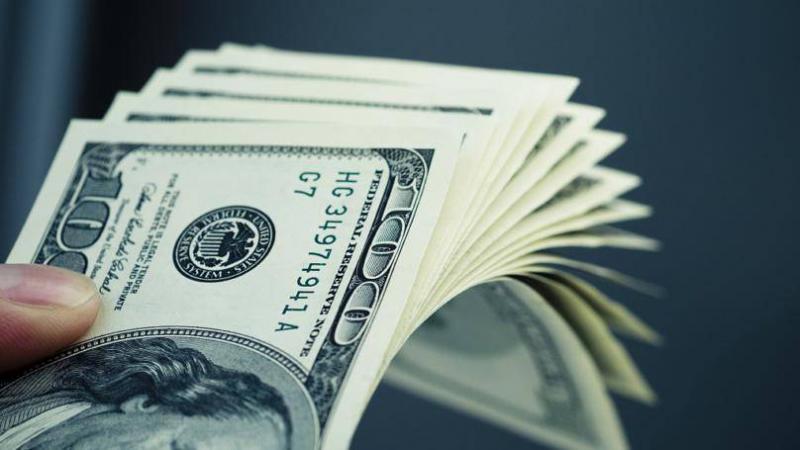The measures taken by the Central Bank of Lebanon to control the collapse of the national currency have become ineffective, even if "temporarily," as the dollar continues to soar due to several factors that outweigh the risks of a lack of monetary and financial policy. It is not true that the Central Bank and the Ministry of Finance are genuinely striving to curb the collapse of the currency; rather, they are engineering a multi-faceted plan aimed at maintaining a situation where the devaluation of the lira parallels the erosion and haircut of deposits at the same value, regardless of how the circulars change or how the "lollar" prices fluctuate. Therefore, the Central Bank and the Ministry of Finance, which sing the same tune, are trying to adopt measures that align with the rising exchange rate of the dollar while maintaining the same rates of haircut on bank deposits.
Despite raising the bank dollar rate from 8,000 lira and 12,000 lira to 15,000 lira, the Central Bank has kept the same amount of money supply present in the market in Lebanese lira by reducing the limits of withdrawals.
What has changed for depositors between the bank dollar price of 8,000 lira and 15,000 lira? In practice, there has been no modification whatsoever to the value of depositors' funds that they are allowed to withdraw from their bank deposits. When the bank dollar rate (or lollar) was 8,000 lira, the haircut rate on deposits was about 75% considering that the real exchange rate of the dollar in the black market fluctuated for months between 25,000 lira and 35,000 lira, averaging around 30,000 lira per dollar.
Starting in February, the bank dollar (lollar) will rise to 15,000 lira, while the real exchange rate of the dollar today is 50,000 lira and is expected to rise, suggesting that the dollar price in the black market may reach around 55,000 lira to 60,000 lira during the upcoming February. Thus, the haircut rate on bank deposits will have returned to its usual level of about 75%.
From this, it becomes clear that the trajectory of the dollar's exchange rate has not been arbitrary; it accelerates at times and slows at others, but ultimately maintains the same level of gains for the banking sector while simultaneously entrenching the same level of injustice against depositors and those entitled in banks. Regardless of the value of withdrawals from deposits or the value of the lollar, the rate of the haircut remains the same.
What does the 15,000 lira mean?
The process of raising the bank dollar rate from 8,000 lira (according to circular 151) and 12,000 lira (according to circular 158) to 15,000 lira will not create any practical changes to the situation of depositors; however, it will result in a fundamental change at the theoretical level, potentially compromising what remains of depositors' rights.
Adopting a lollar price of 15,000 lira is not arbitrary but rather a deliberate move aimed at linking deposit dollars to the (current) official price of the dollar. The Ministry of Finance has adopted a price it described as the official rate for customs dollars and some taxes and fees, which is 15,000 lira, while the Central Bank has also adhered to the price of 15,000 lira for bank withdrawals despite the Central Bank Governor Riad Salameh describing the 15,000 lira rate as an "official price" in place of the 1,507 lira rate.
Linking bank withdrawals to the "supposed" official price serves only to target a further reduction in their size in the upcoming phase. Since the onset of the crisis in 2019, the bank dollar rate has never been tied to the official price or the 1,507 lira rate, but instead has risen from 2,500 lira to 3,900 lira, then to 8,000 lira, and starting from February, 15,000 lira. The question arises, why hasn't the Central Bank set the bank withdrawal rate at 20,000 lira or 18,000 lira, for example? Why the official price adopted by the Ministry of Finance?
The process of shaping the trajectory of the rising dollar price at the expense of the lira not only results in the erosion of bank deposits but will also undermine the increases that the Cabinet recently approved for public sector employees before the end of 2022. It is important to note that the Central Bank issued three circulars yesterday, modifying the price of dollar withdrawals in foreign currency starting from the first of February, raising it "theoretically" from 8,000 lira for the dollar according to circular 151 to 15,000 lira, and from 12,000 lira for the dollar according to circular 158 to 15,000 lira. The Central Bank also mandated that non-resident borrowers and offshore companies pay their bank installments in fresh dollars exclusively.




